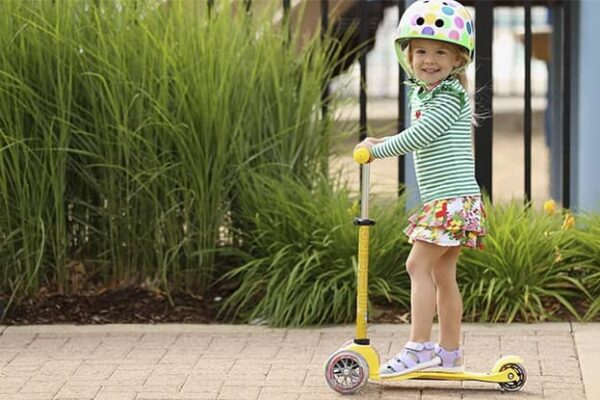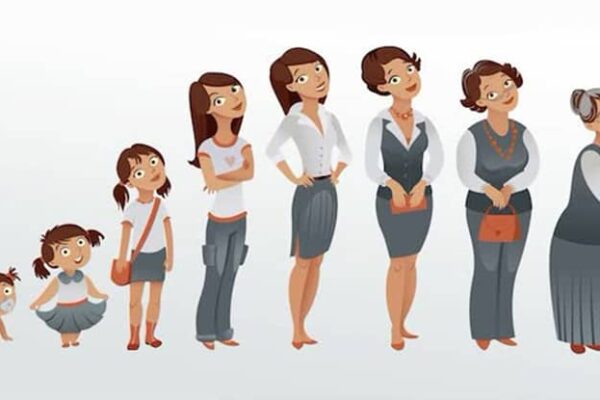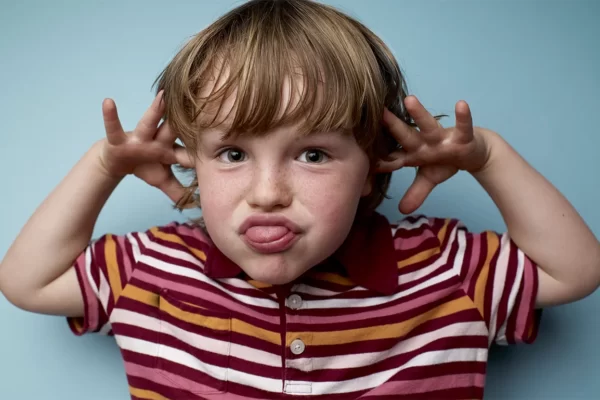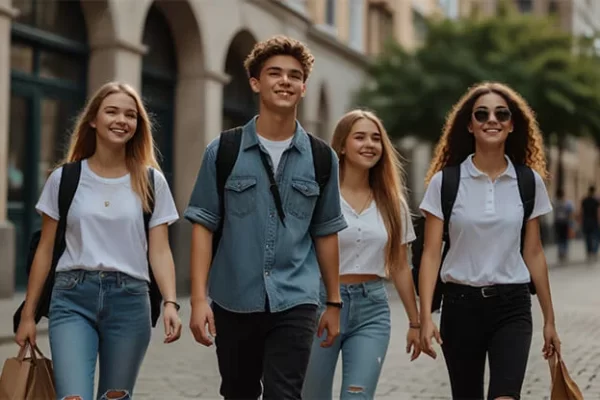In today’s world, social media has become an integral part of the lives of many young people. Platforms like Facebook, Instagram, TikTok, Snapchat, Twitter, and others enable youth to communicate, share content, and stay connected with friends and family around the clock. According to statistics, more than 90% of teenagers aged 13 to 17 regularly use social media.
This phenomenon raises questions and sparks active discussions about the impact of social media on adolescents, their development, and well-being. Let’s explore both the positive and negative aspects of social media use by the younger generation, along with recommendations to minimize potential risks.

The Positive Impact of Social Media on Adolescents
Social media opens up many benefits and opportunities for users, especially for young people. Being present in the online space allows teenagers to broaden their horizons, develop skills, and express their creativity. In addition to the entertainment factor, social platforms offer valuable communication and educational functions.
At the same time, it’s important to understand the dual nature of social media and how to maximize its benefits while balancing online and offline activities. Wise use of the advantages of the virtual space can greatly enrich the life of a modern teenager.
Communication and Maintaining Connections
One of the main benefits of social media for teenagers is the ability to constantly stay in touch with friends, classmates, and family members. Regardless of distance or time of day, young people can exchange messages, photos, videos, and share their thoughts and news. This is especially important during adolescence, a time when social connections are formed, personalities develop, and friendships are strengthened.
Research shows that teenagers who actively use social media feel more connected with their peers and less lonely. For instance, a Pew Research Center survey found that 81% of teenagers believe that social media helps them stay connected with friends they rarely see in person.
However, it should be noted that the quality of these online interactions plays a key role. Superficial contacts and constant comparisons with others can actually increase feelings of loneliness and isolation. Therefore, it’s important to help teenagers develop skills to build healthy and meaningful relationships in the digital environment.
Access to Information and Educational Resources
Social media also serves as a platform for gaining information and accessing educational resources. Teens can follow the news, participate in online discussions, and find useful content on topics of interest, such as science, art, sports, or culture. Many educational institutions and organizations use social media to share learning materials, organize virtual classes, and conduct online lectures.
For example, the Khan Academy channel on YouTube offers free educational videos on various subjects, and the Coursera platform allows teenagers to take online courses and receive certificates from leading universities worldwide.
Additionally, social media enables teenagers to deepen their knowledge and explore interests by connecting with people who share similar passions. This fosters the development of critical thinking, curiosity, and a desire for self-education.
Social media opens new opportunities for education and career orientation for teenagers. Many educational institutions and organizations use these platforms to share learning materials, conduct online courses and webinars, and engage with students.
Furthermore, social media serves as a space for career exploration and finding potential job opportunities. Teenagers can follow company profiles, learn about job openings and internships, and connect with professionals in fields of interest.
Many employers also use social media to search for and attract talented young people. However, it’s crucial to teach teenagers the principles of safe and professional behavior online to protect their reputation and privacy.
Development of Creativity and Self-Expression
Social media allows teenagers to express themselves and unlock their creative potential. They can share their work—whether it’s photography, video, music, literary pieces, or other forms of art—and receive feedback and evaluations from other users. Such interactions stimulate talent development, creativity, and self-confidence.
Many teenagers use social media as a platform to showcase their skills and creativity, attracting an audience’s attention and even finding opportunities for collaboration or promoting their projects. For example, popular YouTubers or TikTok influencers often began their activity during adolescence, publishing entertaining or educational content.
Due to the accessibility and popularity of social media, young people can experiment and develop their creative abilities without being constrained by traditional models. This contributes to the formation of their individuality and self-expression.
Formation of Online Communities Based on Interests
On social media, teenagers can unite in communities based on shared interests, discuss their hobbies, and find like-minded individuals. These could be communities of fans of a particular music group or genre, fans of science fiction, sports enthusiasts, or activists advocating for various social or environmental projects.
Belonging to such online communities allows teenagers to feel part of a group, share their views, and receive support from people with similar interests. For instance, on the Tumblr platform, teenagers often discuss plots from popular books, characters, and share creative works related to their favorite stories.
This promotes the development of social skills, a sense of belonging, and broadens perspectives. Moreover, communication within online communities helps teenagers form their identities.
However, it’s important to remember that not all online communities are positive or beneficial. Some may promote harmful ideas such as extremism, unhealthy habits, or risky behavior. Therefore, it is essential for teenagers to develop critical thinking and learn how to recognize potentially dangerous groups and channels.

The Negative Impact of Social Media on Adolescents
Alongside its clear advantages, the use of social media can come with a range of negative consequences, especially for the still-developing psyche of adolescents. Excessive immersion in virtual reality can have a destructive effect on emotional well-being, academic performance, and socialization in the real world.
In addition to obvious threats such as cyberbullying and interactions with malicious individuals, there are more subtle risks associated with the creation of unrealistic images and dependencies. It is crucial for parents and educators to timely identify dangerous trends and teach teenagers skills for safely using social platforms.
The Risk of Cyberbullying and Online Harassment
One of the serious issues related to the use of social media is cyberbullying and online harassment. Teenagers often become victims of insults, stalking, doxxing, or compromising content on the internet. Cyberbullying can take many forms, such as sending threatening or abusive messages, spreading rumors, or posting personal images or videos without the victim’s consent.
Research indicates that about one-third of teenagers encounter some form of cyberbullying, which has a serious negative impact on mental health, self-esteem, academic performance, and interpersonal relationships. In some cases, cyberbullying even leads to clinical depression, anxiety disorders, or suicidal thoughts.
It is important for teenagers, parents, and educators to be aware of the risks and forms of cyberbullying and to know how to counteract it.
Negative Effects on Self-Esteem
Social media often creates unrealistic standards of beauty, success, and idealized representations of other people’s lives. Constantly comparing oneself to edited and filtered images of other users can negatively affect teenagers’ self-esteem and body image.
Studies show that excessive use of social media is linked to a higher risk of developing eating disorders, such as anorexia and bulimia, especially among teenage girls. Constant comparisons with “ideal” bodies and lifestyles of others can cause feelings of inadequacy, dissatisfaction with one’s appearance, and striving for unrealistic standards.
Additionally, social media can promote the spread of negative comments and criticism regarding appearance, which only exacerbates the issue. It is important to help teenagers learn to critically evaluate the content they view on social media.
Problems with Concentration and Academic Performance
Excessive use of social media can negatively affect teenagers’ ability to concentrate on their studies. Constant notifications, alerts, and distractions from gadgets often hinder focus on completing tasks, studying materials, or participating in classroom activities.
Research shows that teenagers who spend too much time on social media tend to have lower academic performance and struggle with planning, organization, and task completion. Moreover, using smartphones and other devices while doing homework significantly reduces productivity and the quality of work.
Lack of Face-to-Face Communication and Social Skills
While social media facilitates online interaction, it can hinder the development of real social skills and face-to-face communication among adolescents. Spending too much time in the virtual space can lead to difficulties in establishing personal contacts, recognizing non-verbal cues, and maintaining healthy relationships in real life.
Teenagers who are excessively involved in social media may experience difficulties in forming deep connections, resolving conflicts, and expressing emotions in personal interactions. Furthermore, they may miss important social situations and events happening in the real world, which negatively affects their social development.
Internet Addiction
Excessive use of social media sometimes leads to internet addiction. Teenagers may spend too much time in the online environment, neglecting other important aspects of life such as school, hobbies, physical activity, or real-world interaction with friends and family.
Signs of internet addiction include:
- an obsessive need to constantly check social media;
- irritability when unable to access them;
- decreased productivity and interest in other activities;
- disturbances in sleep and eating habits.
Spending prolonged time in the virtual world can lead to social isolation, physical health problems (due to a sedentary lifestyle), and emotional disorders such as depression and anxiety. Therefore, it is important to recognize the signs of excessive social media involvement and take measures to prevent the development of addiction.
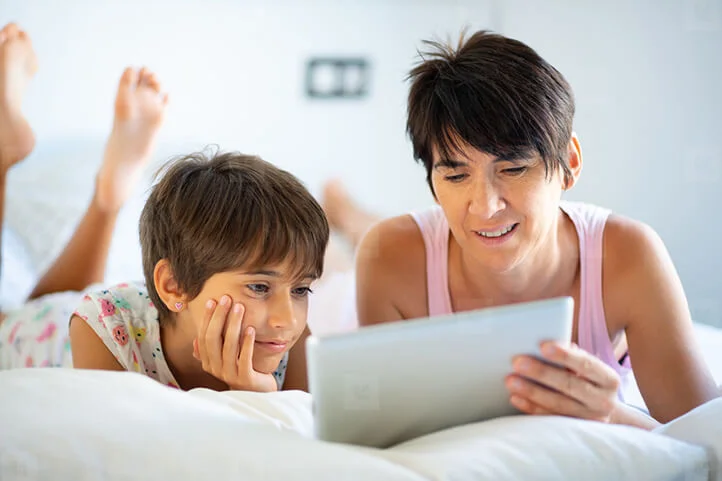
Recommendations for Teenagers and Parents
A thoughtful approach to using social media allows for maximizing its benefits while minimizing risks. It is essential to develop a balanced strategy that considers the psychological characteristics of adolescence and the specifics of particular online platforms. With joint efforts, parents and children can create a safe and positive virtual environment.
The key components here include open dialogue, setting reasonable limits, and developing digital literacy and critical thinking skills. Timely preventive measures will help avoid negative scenarios and foster a responsible attitude towards social media.
Establishing Healthy Boundaries for Social Media Use
One of the key recommendations for safe and healthy social media use by teenagers is setting clear boundaries and rules. It is crucial for young people to learn how to consciously manage the time they spend online and allocate enough time for other important activities such as studying, hobbies, sports, reading, or face-to-face interactions with friends and family.
Parents can assist their children in setting reasonable limits on social media use, such as designating specific hours or time limits for online activity. It is also helpful to agree on “no-internet zones” or times when access to social media and gadgets is restricted, such as during family events or dinner.
Raising Awareness of Risks and Threats
Both teenagers and their parents should be aware of the potential risks and threats associated with social media use. Education on safe online behavior, such as protecting personal information, recognizing signs of cyberbullying, avoiding dangerous communities and false content, and understanding the consequences of their online actions, is crucial.
Parents should openly discuss internet safety with their children and explain the importance of privacy and caution when interacting with strangers online. Additionally, it is vital to teach teenagers to recognize signs of cyberbullying and know how to respond and where to seek help.
Developing Critical Thinking and Media Literacy
In an era of abundant information and content on social media, developing critical thinking and media literacy in teenagers is essential. This will help them analyze and evaluate the reliability and quality of the content they consume, recognize manipulative or misleading messages, and avoid the negative impact of unrealistic expectations and idealized images.
Parents and educators should teach teenagers skills for verifying information sources, analyzing the motives and goals of content creators, and recognizing signs of bias or propaganda. It is also important to help them understand that edited and filtered images on social media do not reflect reality and may create false impressions of other people’s lives.
Encouraging Real-Life Communication and Hobbies
Real-life communication, the development of hobbies, and interests outside of social media should be encouraged by both parents and teachers. This will help balance teenagers’ lives, prevent excessive immersion in virtual reality, and contribute to the development of personality, social skills, and creative abilities.
Teenagers should be encouraged to participate in extracurricular creative and sports activities or volunteer work. Such pursuits will allow them to make new friends, develop communication and teamwork skills, and gain experiences that cannot be acquired solely in the online environment.
Parents can also encourage their children to spend more time with family by organizing joint outings, games, or other activities that strengthen bonds and create positive memories outside of social media.
Monitoring and Supervision
Parents play a key role in monitoring and supervising their teenagers’ use of social media. It is important to establish open dialogue with teenagers, discuss topics related to their online activities, and set reasonable limits and rules when necessary.
Parents should be aware of which social networks and apps their children are using and understand the risks and threats associated with each platform. They can use parental control tools or special apps to track online activity and set limits on usage time or access to specific resources.
However, it is important to strike a balance between supervision and trust, avoiding unnecessary strictness or intrusion into the teenager’s personal space. Open dialogue, explaining the reasons for setting rules, and making decisions together will help regulate social media use more effectively.
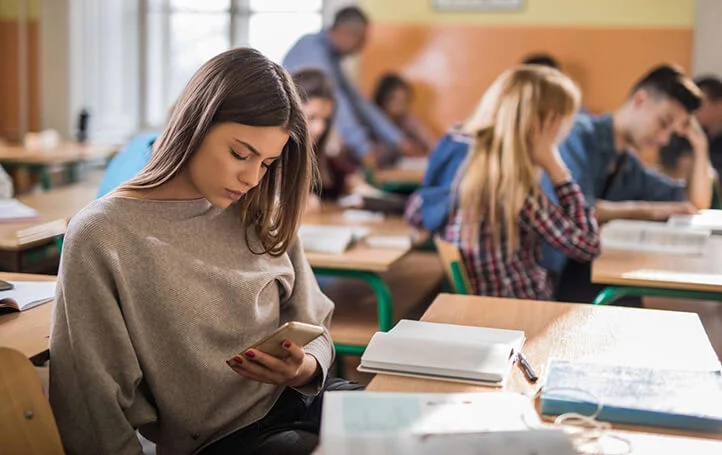
The Role of Schools and Communities
In addition to parents, schools and local communities also play a crucial role in ensuring the safe and healthy use of social media by teenagers. Educational institutions can develop and implement media literacy and digital safety programs that teach young people critical thinking, risk recognition, and responsible behavior in the online environment.
Moreover, schools can organize awareness campaigns, workshops, or training sessions for parents to raise their awareness about the influence of social media on teenagers and help them learn how to more effectively guide and monitor their children in this area.
Local communities, such as youth centers, libraries, or non-profit organizations, can also offer resources and activities aimed at supporting positive use of technology and social media among teenagers. This includes organizing discussion groups, digital literacy workshops, or providing safe online platforms for communication and creative expression.
Collaboration between families, schools, and communities is essential to creating an environment where teenagers can use social media safely and responsibly, while receiving support from adults.
The Influence of Social Media on Teenagers’ Political Views
Social media also plays a role in shaping teenagers’ political views and engaging them in public life. It allows young people to learn about various perspectives, participate in discussions, and join campaigns on pressing issues.
For example, during the “Black Lives Matter” movement, social media was used to spread information, organize protests, and draw attention to the issue of racism and police violence. Many teenagers actively participated in these online discussions and actions, shaping their political views and civic engagement.
However, it should be noted that social media can also contribute to the spread of misinformation, radical ideas, and societal polarization. Therefore, it is important to develop critical thinking and media literacy skills in teenagers so that they can analyze the reliability of information and form their own well-reasoned opinions.
The Impact of Social Media on Teenagers During Wartime
During war and related restrictions, especially in front-line areas, social media has become even more significant for teenagers. It serves as a key tool for staying in touch with friends and family, continuing education in an online format, and accessing entertainment content and information about the situation on the frontlines.
However, prolonged isolation and excessive use of social media during this time can also negatively affect teenagers’ mental health and well-being. Studies show an increase in cases of depression, anxiety disorders, and internet addiction among young people during wartime.
In this situation, the role of parents, educators, and psychologists in ensuring balanced use of digital technologies and social media, as well as supporting teenagers’ mental health in difficult circumstances, becomes especially important.
New Trends and Challenges in Social Media Use
With the advancement of technology and changing user preferences, social media is also evolving, with new platforms and content formats emerging. For example, in recent years, apps like TikTok and BeReal, focused on creating and sharing short everyday-life videos, have gained significant popularity.
These new trends present both opportunities and challenges for teenagers. On the one hand, they offer new forms of self-expression and creativity, but on the other hand, they can exacerbate issues with self-esteem and reality perception due to the growing amount of filtered and idealized content.
Additionally, new risks arise related to privacy and data security, as well as the spread of harmful or illegal content. Therefore, it is important for parents, educators, and regulators to closely monitor these trends and take measures to protect teenagers in the rapidly changing digital environment.
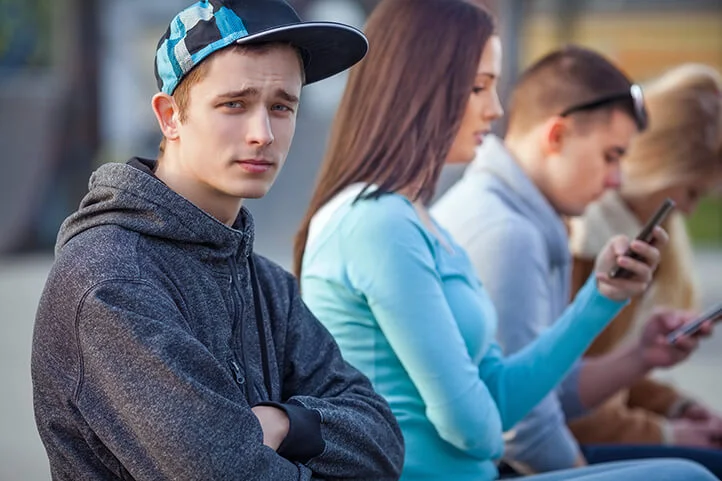
Conclusion
The impact of social media on adolescents can be both positive and negative. On the one hand, it provides opportunities for communication, self-expression, access to information and educational resources, and the formation of interest-based communities. On the other hand, there are risks related to cyberbullying, negative effects on self-esteem, difficulties with concentration, lack of face-to-face communication, and the danger of developing internet addiction.
It is important to understand that social media is neither inherently good nor bad—it all depends on how it is used. A conscious and balanced approach to social media, based on setting healthy boundaries, developing critical thinking and media literacy, and encouraging real-world communication and hobbies, will benefit teenagers’ development.
At the same time, excessive and uncontrolled immersion in the virtual world can have negative consequences for young people’s mental and physical health, social development, and academic performance. Therefore, it is crucial for parents, educators, schools, and communities to work together to ensure safe and positive social media use by the younger generation.
Further research and discussions on this topic are needed to better understand the impact of social media on various aspects of teenagers’ lives and to develop effective strategies and recommendations to protect and foster their development in the digital age. Only in this way can we harness the full potential of these technologies while minimizing the associated risks for youth well-being.
Recommended Reading
- “Alone Together: Why We Expect More from Technology and Less from Each Other” by Sherry Turkle. The author explores how social media communication affects personality development and interpersonal communication skills in teenagers.
- “The Dumbest Generation: How the Digital Age Stupefies Young Americans and Jeopardizes Our Future” by Marc Bauerlein. The book examines cultural and social changes occurring in the younger generation under the influence of technology and social media.
- “Parenting in the Digital Age: A Quick Guide to Balancing Technology and Real-Life Experiences for Kids” by David Sharma. The book provides practical advice for parents on raising children in the era of social media.

